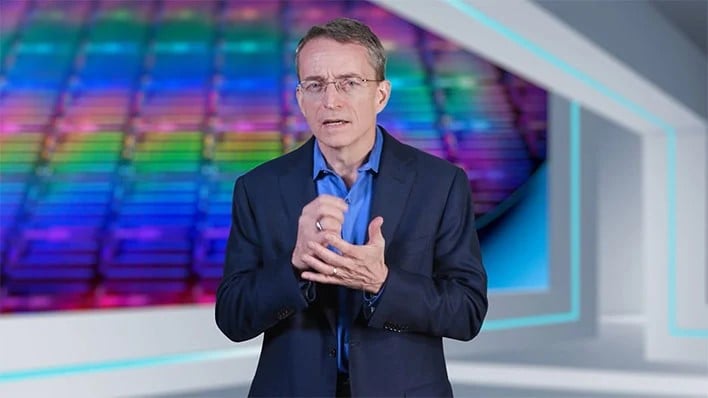Intel On Track To Deliver 5 Nodes In 4 Years And Will Soon Reveal What Comes After 1.8nm

Intel is hosting its IFS Direct Connect event on February 21, and the company is seemingly still on track to hit its goal of five nodes in four years (also known as 5N4Y), and is also ready to share its post-18A roadmap. The event features CEO Pat Gelsinger and General Manager Ann Kelleher, who is the speaker delivering the presentation on Intel's new roadmap. The talk also features other executives detailing Intel's advancements in packaging and manufacturing.
According to the event schedule, the new roadmap is unveiled during Kelleher's presentation, titled "Delivering the Present and Building the Future: Unveiling Our Roadmap Beyond 5N4Y." Ever since Gelsinger became CEO in 2021, regaining the technological edge in manufacturing has been a key priority for Intel. The five nodes in four years plan is supposed to get Intel caught up to its rival TSMC, and so far Intel has delivered two of the five nodes: Intel 7 (formerly 10nm) and Intel 4 (formerly 7nm). Intel has claimed that Intel 3, 20A, and 18A all will be complete in 2024, though 18A-based chips are expected to only launch in 2025.

It's hard to guess what exactly Intel's roadmap will look like, but if its recent efforts are any indication, then we might expect the company to continue a steady pace of new process nodes, which may include both full nodes and refinements similar to Intel 4 and Intel 3. One technological breakthrough Intel may introduce is the 3D stacked CMOS transistor, which the company patented two years ago and showed off in May at the IEEE Electron Devices Meeting.
The other big question is whether Intel's roadmap will be able to keep up with the pace of Moore's Law, which forecasts that transistor density in processors should double every two years. For Intel's cutting-edge chips, this means achieving the capability of producing a processor with at least one trillion transistors by 2030; for comparison, the largest chips today have just over 100 billion transistors, with examples being Apple's M2 Ultra at 134 billion and Intel's Ponte Vecchio at around 100 billion. Apple's rumored M3 Ultra would theoretically have 184 billion transistors, which comes very close to the 200 billion mark.
To get to one trillion transistors though, Intel can't solely rely on new nodes even if its ambitious plans go off without a hitch. Adding more chips to a package via tiles and 3D chip stacking will further increase transistor count, and Intel's PowerVIA backside power delivery technology is set to improve performance through increased clock speeds.
According to the event schedule, the new roadmap is unveiled during Kelleher's presentation, titled "Delivering the Present and Building the Future: Unveiling Our Roadmap Beyond 5N4Y." Ever since Gelsinger became CEO in 2021, regaining the technological edge in manufacturing has been a key priority for Intel. The five nodes in four years plan is supposed to get Intel caught up to its rival TSMC, and so far Intel has delivered two of the five nodes: Intel 7 (formerly 10nm) and Intel 4 (formerly 7nm). Intel has claimed that Intel 3, 20A, and 18A all will be complete in 2024, though 18A-based chips are expected to only launch in 2025.

It's hard to guess what exactly Intel's roadmap will look like, but if its recent efforts are any indication, then we might expect the company to continue a steady pace of new process nodes, which may include both full nodes and refinements similar to Intel 4 and Intel 3. One technological breakthrough Intel may introduce is the 3D stacked CMOS transistor, which the company patented two years ago and showed off in May at the IEEE Electron Devices Meeting.
The other big question is whether Intel's roadmap will be able to keep up with the pace of Moore's Law, which forecasts that transistor density in processors should double every two years. For Intel's cutting-edge chips, this means achieving the capability of producing a processor with at least one trillion transistors by 2030; for comparison, the largest chips today have just over 100 billion transistors, with examples being Apple's M2 Ultra at 134 billion and Intel's Ponte Vecchio at around 100 billion. Apple's rumored M3 Ultra would theoretically have 184 billion transistors, which comes very close to the 200 billion mark.
To get to one trillion transistors though, Intel can't solely rely on new nodes even if its ambitious plans go off without a hitch. Adding more chips to a package via tiles and 3D chip stacking will further increase transistor count, and Intel's PowerVIA backside power delivery technology is set to improve performance through increased clock speeds.

